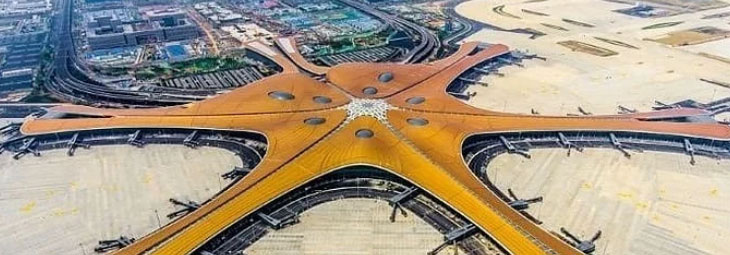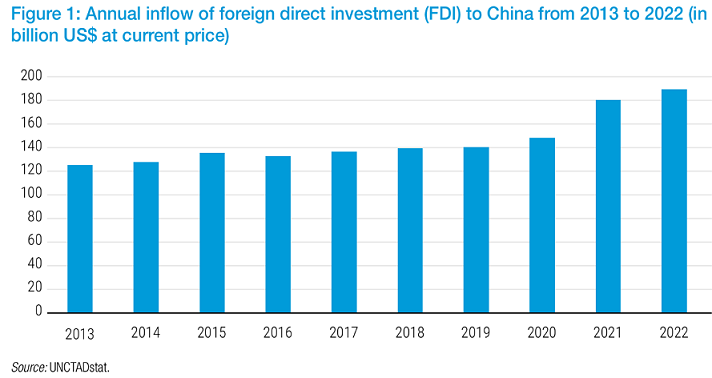

1. Background and Progress
China introduced its Pilot FTZs in September 2013, as part of its response to the external uncertainties triggered by the Global Financial Crisis, to explore new ways to deepen China’s reform and opening up1. China set up its first FTZ in Shanghai to attract more foreign investment and promote trade and regional integration. Since then, China has established 21 FTZs involving 51 cities including those in such diverse areas as the coastal provinces of Fujian and Guangdong and the inland provinces of Shaanxi and Sichuan.
Free Trade Zones are areas where goods may be landed, handled, manufactured or reconfigured, and re-exported without the intervention of the local customs authorities. Only when the goods are moved to consumers within the province in which the zone is located do they become subject to the prevailing customs duties.
Companies registered (location of registered address) within the boundaries of these SEZ enjoy:
♦Import tax exemption until goods are moved out of the SEZ (out of the warehouse)
♦Free currency exchange rate (no fees for converting major currencies)
♦A fast and streamlined customs clearance.
♦A hub of transportation, pick and pack and logistic service providers to choose from. All nearby.
♦A faster VAT refund
Following the success of the first 4 FTZs, the CPC decided to open additional FTZs with different economic incentives (not just trading) to align with the government planned economy across its territory.
2. Features
Experimentalism and pragmatism, two basic features of China’s economic policy formulation, have been fully integrated in the country’s Pilot Free Trade Zones (FTZs) strategy. The scope of China’s FTZ goes far beyond trade (and investment) promotion to include a variety of policy dimensions; government functions and services, manufacturing sector upgrading, services sector opening, financial deepening, skills development and green city development. South-South Cooperation and many others have all been introduced into those 21 FTZs for “experimentation”. Consequently, institutional innovation is defined as the essence of the FTZs strategy.
3. Broad Goals and Local specificities
The policy scope of FTZs is very wide, beyond just trade policies. In the Master Plan of Shanghai FTZ issued by the State Council, the overall mission of Shanghai FTZs was exploring “new ways” and “new experience” for deepening reform and opening up of Chinese economy. Through institutional and policy innovation and experimentation, FTZs aim to achieve broader goals combining policy innovation and scaling up.
In addition to the somewhat common framework of institutional innovations, all Pilot FTZs have regional specializations based on a province’s competitive positioning. Identifying the peculiarities of local conditions and positioning on regional advantages and peculiarities has been emphasized. As such, the 21 pilot FTZs are not identical and are not based on generic prescriptions. Table 1 summarizes the key local features of each FTZs.
Table 1: A summary matrix of specialization of the 21 Pilot FTZs

Source: UNCTADstat.
4. Pilot FTZs and Chinese Economic Catch-up
The pilot FTZs and the other development zones were not isolated or stand-alone entities and are part of China’s broader economic policy framework. Conducting a thorough assessment of the direct contribution of FTZs to China’s overall economic growth remains challenging, given that the dispersion of the zones, variation of the policies, experimental features and data availability. But observing several key aspects (Figure 1) of Chinese economic catch-up such as industrial transformation, trade, FDI (Foreign Direct Investment), and innovation can help to understand the role of FTZs.

From the coastal areas to the central inland regions and border provinces, the FTZs have become pacesetters for the country's high-standard reform and opening-up. In the past decade, these areas have contributed 18 percent of the country's foreign investment and foreign trade volume with less than four-thousandths of the country's land area. Up to 302 institutional innovations have been nurtured in these areas and promoted nationwide according to Guo Tingting, vice-commerce minister.
The 21 pilot FTZs have catalyzed China’s development strategies update, deeper economic integration, trade and FDI promotion, and industrial high-quality development. They have played a crucial role in attracting foreign investment and stabilizing foreign trade.
According to the Ministry of Commerce (MOFCOM)2, regarding institutional innovation, China has implemented over 3,400 “pilot reform assignments” in 21 FTZs and has replicated 302 institutional innovations at national level; in terms of facilitating industrial transformation, FTZs, through reforms in trade, investment, financial, science and technology policies, have promoted “high quality industrial agglomeration development”; regarding the services sector, FTZs have also supported development of financial and shipping services. In 2022, the 21 FTZs saw exports and imports rise 14.5 percent year on year to 7.5 trillion yuan, accounting for 17.8 percent of the country's total. The utilized foreign investment in FTZs exceeded 220 billion yuan, making up 18.1 percent of the total. Along the strong growth of trade and FDI in FTZs, the makeup of Chinese exports has shifted towards technologically intense goods, such as electrical, computer, vehicles and machinery, highlighting the advances in technological capability.
FTZs have also reinforced China’s economic cooperation and integration with other regional developing economies particularly with ASEAN members (South-South Cooperation), which therefore has created the synergies with the country’s integration initiatives such as Regional Comprehensive Economic Partnership (RCEP), ASEAN-China Free Trade Agreement (ACFTA), and Closer Economic Partnership Arrangements (CEPA), etc.
The 21 FTZs continued to see a steady increase in foreign investment in the first half of 2023. "Covering less than four thousandths of the country's land area, the FTZs have attracted 18.4 percent of foreign investment in China in the first half," said Yang Tao, an official with the Ministry of Commerce.
Standing at a new historical starting point, China's FTZ construction will usher in new opportunities and inject more vitality into the country's high-quality development. In the future, the pilot FTZs will further align their policies with high-standard international economic and trade rules, promote institutional opening up, and improve market access. Also, in pilot FTZs, efforts will be made to strengthen the integration of reforms in different areas and explore ways to build modern industrial clusters with their own characteristics.
Source:
<https://unctad.org/system/files/official-document/gds2023d5_en.pdf>
<https://english.www.gov.cn/news/202308/03/content_WS64cae31cc6d0868f4e8de54b.html>
<https://fdichina.com/blog/fdi-china-exclusive-the-21-free-trade-zones-guide/>
<https://www.chinadaily.com.cn/a/202309/21/WS650ba744a310d2dce4bb6ee5.html>
Edited by Bao Lianying